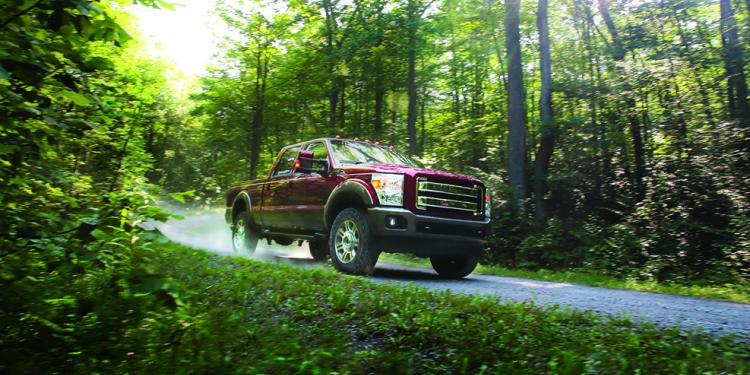
Weekend bag? Check! Family and friends? Check! Top down? Check! Favorite playlist locked and loaded? Check! It’s finally time to head out on that road trip you’ve been dreaming about. But before you take that epic road trip, we want to help save you money and headaches down the road! Here are a few tips to make sure your tires are prepared to get you to your ultimate destination.
1. Under Pressure – According to the Rubber Manufacturers Association (RMA), only 15% of drivers know how to properly check tire pressure. Why is proper tire inflation important? Under inflated tires cause U.S. drivers to waste 1.2 billion gallons of fuel annually. According to the U.S. Department of Energy, properly inflated tires can improve fuel efficiency by up to 3 percent. They also cite that under-inflated tires can lower gas mileage by 0.2 percent for every 1 psi drop in pressure on all four tires. Properly inflated tires are also safer and last longer, ultimately saving you money!
Check tire pressure regularly! Once per month and before every long trip. Tire pressure should be checked when tires are cold (car has not been driven for at least three hours). The correct tire pressure can be found in the car owner manual, on the gas tank lid, the driver’s side door edge, or on the door post. Tire pressure must be the same on the tires of each axle, but may be different on the front and rear axle. And remember to tightly close the valve caps to protect the valve from dust and dirt and to prevent leaking. Replace missing valve caps without delay.
Note: While new vehicles are equipped with tire pressure monitoring systems (TPMS), these systems issue a low pressure warning only after tire pressure drops 25 percent below the vehicle manufacturer’s recommended pressure. In many cases a slight drop in air pressure would not trigger a warning light and would cause a loss of fuel economy and could lead to vehicle safety issue. Even with TPMS, motorists need to check tire pressure with a tire gauge every month.
2. Don’t Forget The Spare – Many motorists carry a spare tire in their vehicle. It’s important to take a moment at the beginning of each month, and before your road trip, to inspect your spare for proper tire pressure and any visible issues. Remember, tires age too, so if you’ve been carrying your spare for a lengthy period of time, it may need to be replaced.
3. Penny For Your Thoughts – Proper tread depth is essential to prevent hydroplaning and skidding. The minimum tread depth is 2/32nd of an inch (1.6 mm). If your tires don’t include Continental’s Tuned Performance Indicators, you can use a penny to check tread depth. Simply place the penny upside down into a tread groove. If you can see all of Lincoln’s head, it’s time for a new tire.
Advanced and unusual wear can reduce the ability of tread to properly grip the road in adverse conditions. Visually check tires for uneven wear, looking for high and low areas or unusually smooth areas and any signs of damage. Motorists should also check sidewalls for gouges, cuts, bulges or other irregularities.
4. Stay In Line – A jolt from hitting a pothole or curb can put a front end out of alignment and damage tires. Misalignment of wheels in the front or rear can cause uneven and rapid treadwear and should be corrected by a tire dealer. Have the alignment checked periodically as specified by the vehicle owner’s manual or if trouble such as a “pulling” sensation or vibration is experienced.
5. Switch It Up – Unless a vehicle owner’s manual has a specific recommendation, the guideline for tire rotation is approximately every 5,000 – 8,000 miles. Rotating a vehicle’s tires regularly will help achieve more uniform wear and extend the life of your tires. If uneven wear is experienced, ask a tire dealer to check for, and correct, any misalignment, imbalance or other mechanical problem involved before rotation.
6. Don’t Pack On Pounds – And remember, when packing for that summer road trip, it’s important not to overload a vehicle because it can shorten tire life. According to the RMA, every 200lbs of extra weight reduces fuel economy by one mpg. Motorists can check the owner’s manual for the vehicle’s maximum load.
If it’s necessary to replace one or more of your tires before your road trip, it’s important to replace tires with the same type of tires that came on the vehicle as original equipment (including tire size, type and speed rating). This information can be found on the sidewall of your current tire or in the owner’s manual for the vehicle.
If you ever have questions, visit your local Continental Tire dealer as they are always happy to help! Just five minutes each month will help you save money and headaches down the road.
Happy road trippin’!
